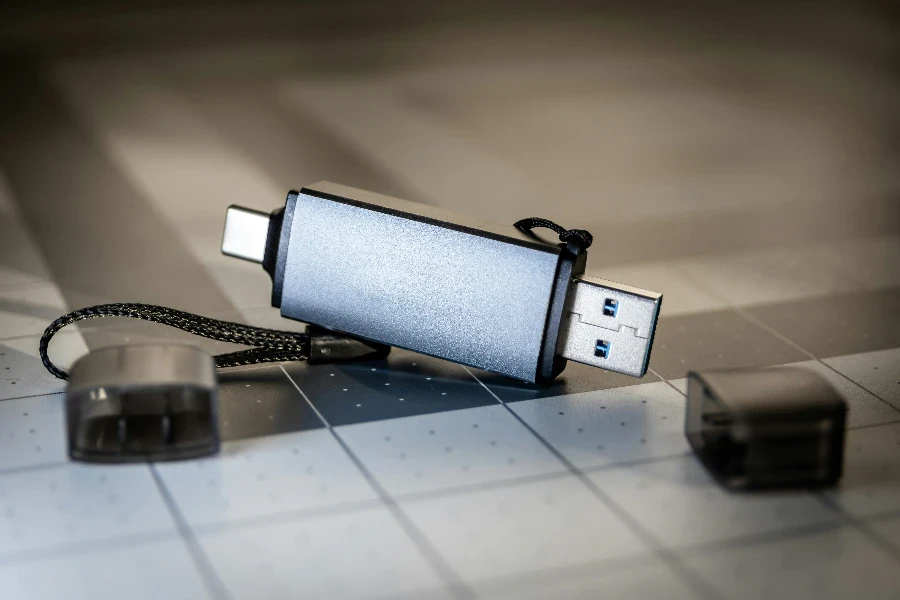In today’s digital age, the demand for high-capacity, portable storage solutions is more prevalent than ever. A 1TB flash drive represents a significant leap in technology, offering substantial storage capacity in a compact form. This article delves into the essential aspects of 1TB flash drives, guiding you through their capabilities, compatibility, durability, speed, and cost-effectiveness. Whether you’re a professional needing expansive file storage or a casual user looking to store a vast media collection, understanding these key factors can help you make an informed decision.
Table of Contents:
– What makes a 1TB flash drive stand out
– Compatibility concerns with 1TB flash drives
– Assessing the durability of 1TB flash drives
– Speed benchmarks for 1TB flash drives
– Cost-effectiveness of investing in a 1TB flash drive
What makes a 1TB flash drive stand out

The emergence of 1TB flash drives has been a game-changer in the realm of digital storage. Their ability to hold vast amounts of data in such a small package is nothing short of remarkable. Unlike traditional hard drives, flash drives utilize solid-state technology, which means they have no moving parts. This not only makes them more resistant to physical shock but also allows for quicker data access times. For individuals who prioritize portability without compromising on storage capacity, a 1TB flash drive is an invaluable tool.
Moreover, the versatility of these drives cannot be overstated. They can be used to back up important documents, store large video files, or even hold extensive software libraries. Their plug-and-play nature makes them incredibly user-friendly; with a simple USB connection, you’re ready to transfer data between devices. This ease of use, combined with the sheer storage capacity, positions 1TB flash drives as a top choice for both tech enthusiasts and everyday users.
Lastly, the evolution of flash drive technology has led to more reliable storage solutions. With advancements in wear leveling and error correction algorithms, today’s 1TB flash drives are not only larger in capacity but also more durable and dependable over time. This reliability is crucial for users who store critical data and expect it to be accessible and intact when needed.
Compatibility concerns with 1TB flash drives

When considering a 1TB flash drive, it’s essential to address compatibility. The vast storage capacity is advantageous, but ensuring that your devices can fully utilize the drive is paramount. Most modern computers and laptops feature USB 3.0 or USB-C ports, offering optimal data transfer rates. However, users with older technology may find themselves limited by USB 2.0 ports, which can significantly slow down file transfers. It’s important to check your device’s specifications and understand how they align with the capabilities of the flash drive.
Another aspect to consider is the file system format of the flash drive. Different operating systems (OS) have varying preferences; for instance, Windows systems commonly use NTFS, while macOS may use APFS or HFS+. A 1TB flash drive formatted in a system not recognized by your OS can pose challenges. Fortunately, reformatting the drive is usually a straightforward process, though it’s vital to back up any pre-existing data to avoid loss.
Furthermore, the advent of USB-C and Thunderbolt 3 technologies has introduced faster data transfer speeds and more versatile connectivity options. However, not all 1TB flash drives support these newer standards. Users should carefully consider their specific needs and whether their devices support these technologies to fully benefit from what a 1TB flash drive offers.
Assessing the durability of 1TB flash drives

Durability is a critical factor when evaluating the longevity and reliability of a 1TB flash drive. Thanks to solid-state technology, these drives are inherently more robust than their hard disk counterparts. They are better equipped to handle drops, bumps, and jostles, making them ideal for on-the-go use. However, durability extends beyond just physical resilience.
Environmental factors such as extreme temperatures, moisture, and magnetic fields can also affect a flash drive’s performance and lifespan. High-quality 1TB flash drives are designed to withstand these conditions, ensuring your data remains safe in a variety of scenarios. It’s essential to consider the manufacturer’s specifications regarding durability when making your selection.
Additionally, the lifespan of a flash drive is determined by write cycles — the number of times data can be written to and erased from the device. While 1TB flash drives boast a high capacity, maximizing their lifespan requires mindful usage. Regularly transferring large amounts of data can wear down the drive over time. Understanding and managing this aspect can help maintain the drive’s integrity for longer periods.
Speed benchmarks for 1TB flash drives

Speed is a defining feature of 1TB flash drives, influencing how quickly files can be transferred to and from the device. USB 3.0 and USB-C have elevated the data transfer rates significantly compared to the older USB 2.0 standard. USB 3.0 connections can achieve speeds up to 5 Gbps, while USB-C and Thunderbolt 3 interfaces offer even faster rates, making them highly desirable for users who frequently move large files.
It’s important to note that the advertised speed of a flash drive may not always reflect real-world performance. Factors such as the device’s USB port, the file size being transferred, and the drive’s own architecture can all impact transfer speeds. Conducting your own speed tests or consulting independent benchmarks can provide a more accurate understanding of what to expect in terms of performance.
Moreover, the read and write speeds of a flash drive are often different, with read speeds usually being faster. For users who primarily use their 1TB flash drive to store and access media, such as videos or music, high read speeds are beneficial. Conversely, those who frequently save new data to their drive should consider models with faster write speeds to enhance efficiency.
Cost-effectiveness of investing in a 1TB flash drive

The decision to invest in a 1TB flash drive ultimately comes down to evaluating its cost-effectiveness. Initially, the higher price point compared to lower-capacity drives may seem daunting. However, when considering the per-gigabyte cost, 1TB flash drives often present a more economical solution in the long run. Their ample storage capacity can negate the need for multiple smaller drives, consolidating your data into a single, convenient location.
Furthermore, the durability and speed of high-quality 1TB flash drives contribute to their value proposition. Investing in a reliable drive that can withstand physical wear and tear while offering fast data transfer rates can save money and frustration over time. It’s a worthwhile consideration for users who depend on their flash drive for frequent use.
Lastly, the versatility of a 1TB flash drive enhances its cost-effectiveness. Whether it’s for professional use, such as video editing or software development, or personal use, like storing a large media library, the ability to carry a vast amount of data in your pocket is invaluable. As storage needs continue to grow, the investment in a 1TB flash drive becomes increasingly justified.
Conclusion:
A 1TB flash drive is a powerful tool in the digital age, offering vast storage capacity, durability, and speed in a portable form. Understanding its compatibility requirements, assessing its durability, recognizing the importance of speed, and evaluating its cost-effectiveness are crucial steps in making an informed decision. As technology advances, the role of such high-capacity flash drives will only become more integral to our digital lives, making it essential to choose wisely.



